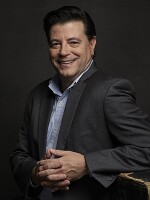The Rev. Martin Luther King Jr. was already an influential civil rights leader in 1959 when the University of Hartford’s (UHart) Hillyer College invited King to be part of the University’s Alexander S. Keller Memorial lecture series.
Just four years earlier, King orchestrated a boycott of Montgomery, Alabama’s segregated bus system. The extended boycott paved the way for a U.S. Supreme Court ruling that found such methods of segregation illegal, a crucial early victory in the civil rights movement.
In his introduction for King at the Bushnell on May 7, 1959, Alan Wilson, president of UHart’s Hillyer College, mentioned the bus boycott, as well as his involvement with the Southern Christian Leadership Conference, an important civil rights organization led by King.
King prepared one of his go-to speeches for the Hartford lecture, “The Future of Integration.” He gave the same speech at Yale University four months earlier. Before starting his lecture, he recalled the last time he was in Hartford, as a freshman in college some 15 years prior.
“I joined several of my fellow students in coming to Connecticut to work for the summer on one of the tobacco farms,” King said. “All week long we would work very hard and the sun was very hot. And it was always a big relief for the weekend to come around and we could come to Hartford.”
There is a memorial in Simsbury, Connecticut, dedicated to King and the two summers he spent working there as a teenager.
During his nearly 50 minute speech in Hartford, King took the audience through the historic and societal barriers to racial integration.
“People hate each other because they fear each other,” King said. “They fear each other because they don’t know each other. They don’t know each other because they can’t communicate with each other, and they can’t communicate with each other because they are separated from each other. Therefore something must happen to reopen the channels of communication.”
He also elaborated on his philosophy of non-violent protest.
“We will not only win freedom for ourselves, we will so appeal to your heart and conscience, that we will win you in the process,” King said. “Therefore, our victory will be a double victory.”
On May 14, 1959, one week after the speech, Hartford Courant editorial writer Thomas E. Murphy, who attended the lecture, praised King in his “Of Many Things” column.
“As Dr. King said, if the white man’s capacity to be cruel and punishing increases, the Negro’s capacity for absorbing that punishment with grace and patience must also increase,” Murphy wrote. “And in this strange tug-of-war, love will win, as Mahatma Gandhi proved in his conquest of the whole British Empire.”





